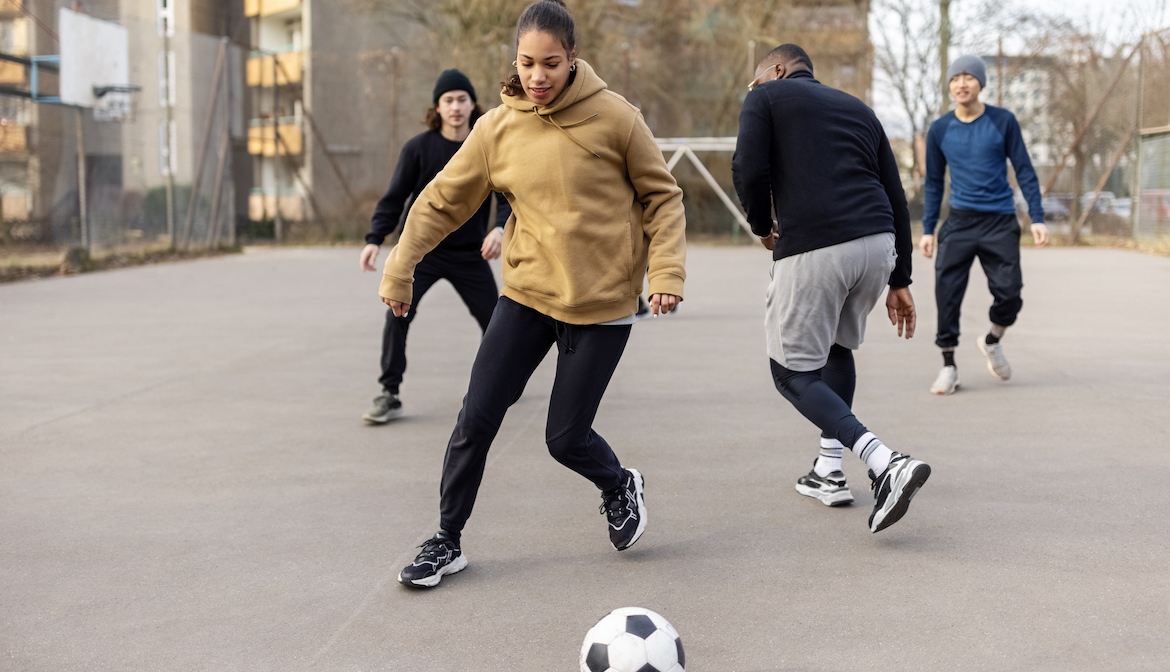Of course, maintaining strong bones is a critical component of healthy aging. As we get older, our bones begin breaking down more bone than they build, causing them to lose density and strength. Over time, if we don’t support our bone health with regular exercise and a nutritious diet, we can develop osteoporosis, a disease characterized by weak, fragile bones and an increased risk of fractures.
Osteoporosis is considered a “silent disease” since most people don’t realize they have it until they break a bone. Yet it affects an estimated 10 million Americans. What’s more, roughly half of all women will break a bone at some point in their life because of osteoporosis.
Fortunately, taking good care of your bones can actually be fun. A recent study out of the University of Indiana, published in the American College of Sports Medicine’s Medicine and Science in Sports and Exercise, found that young women who participate in multidirectional sports (e.g., soccer, basketball, volleyball) can build stronger, healthier bones and end up being less prone to bone-related injuries as they age, compared to those who don’t play these kinds of sports.
Why playing sports builds strong bones
In the study, researchers used high-resolution imaging to examine bones in the shins and feet of female collegiate cross-country runners (who frequently experience stress fractures). They found that playing “multidirectional” sports is better for young athletes’ bone health—and helps prevent bone-related injuries as they age—than running alone. Young women who participated in running and multidirectional sports when they were younger had 10 to 20 percent greater bone strength than those who only ran.
According to the researchers, this is because loading your bones in various directions activates bone cells, causing adaptations to different directions and allowing you to develop a more robust skeleton.
Although our bones are always being remade, with new bone forming and old bone breaking down, bone mass typically peaks in our mid to late 20s, so we need to take advantage of those early years when new bone formation outpaces breakdown. “It’s imperative we optimize their bone health, hence multidirectional sports, as young as possible,” says Maria Kyriacou, MD, a primary care sports medicine physician at Baptist Health Orthopedic Care in Miami.
You can strengthen your bones at any age
Although this study looked at adolescents, the bone health benefits of playing sports aren’t exclusive to teens. Running around and jumping after a ball can increase bone strength in adults, too—even after menopause. “Playing multidirectional sports can help counteract losses in bone mineral density for post-menopausal women,” says Kyriacou. Activities like kicking around a soccer ball, taking up tennis, or playing frisbee can all benefit your bones.
Additionally, weight-bearing activities are also excellent for bone strength at any age. If your go-to activity is something that’s non-weight bearing, like swimming or cycling, try to incorporate weekly cross-training with multidirectional movements to stimulate your bones, Kyriacou recommends. “Exercises include jumping, weighted lunges, squats, deadlifts, and push-and-pull exercises,” she says. “These will load your lumbar spine and hips.”
If you’re worried about increasing your risk of acute injuries by taking up a contact sport like basketball, talk to your doctor. Take it slowly to begin. And then let your inner child loose to enjoy the thrill of healthy (and bone-building) competition.
